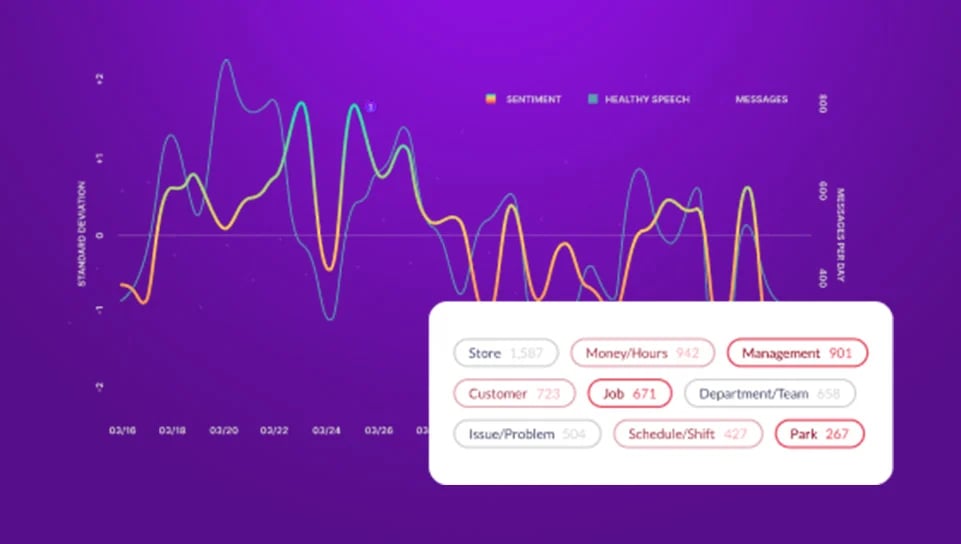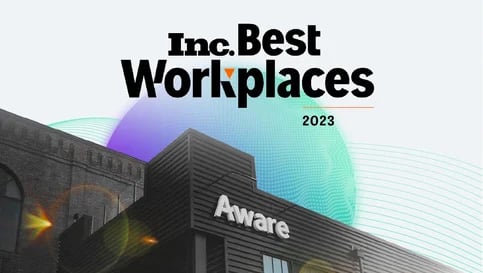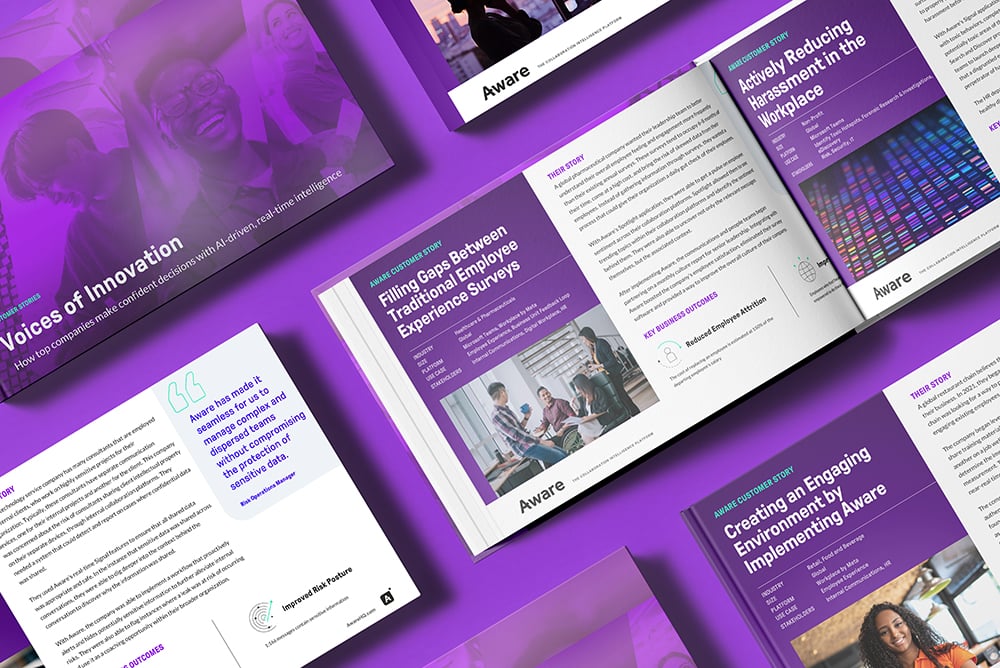REAL-TIME compliance FOR COLLABORATION
Protect collaboration platforms from compliance and regulatory fines
Close the gaps left by legacy tools and keep pace with the growth and unique data set within Slack and Microsoft Teams.
%20(1).png?width=1271&height=446&name=Group%20164262%20(4)%20(1).png)
The compliance trifecta
Monitor, investigate and govern data across your ecosystem.
Monitoring
Detect and address communications containing PII, PCI and other sensitive data
Investigations
Search, analyze, and export collaboration data from a secure, centralized platform
Information Governance
Maintain continuous compliance through granular data retention and policy enforcement
Aware has a full suite of compliance services, which really nobody else has. Sure, some have “monitoring,” but most products are put together for eDiscovery and try to make it work for compliance.
— Director of Compliance

WHY AWARE
Centralized compliance, risk mitigation, and data control for collaboration tools
Mitigate noncompliance in collaboration data in real-time with AI-powered compliance automations from Aware.
Proactively detect and remediate noncompliance
Aware ingests and analyzes messages in real time using the industry’s most accurate NLP to identify sensitive data that could put your organization at risk of violating HIPAA, HITRUST, FINRA, PCI-DSS, GDPR and more.
Understand the full context of user behavior
Dig deeper into the context behind sensitive data sharing through Aware’s intuitive federated search, automated removals, and detailed reporting features.
Enable precise control over user data
Empower all employees in collaboration tools with granular information governance and immutable archiving capabilities that facilitate compliance with major regulatory requirements.
-1.png?width=688&height=560&name=Macbook%20Pro%2016%20mockup%20(1)-1.png)
-1.png?width=688&height=560&name=Macbook%20Pro%2016%20mockup%20(2)-1.png)
.png?width=688&height=560&name=Macbook%20Pro%2016%20mockup%20(3).png)
COMPLIANCE ACROSS THE ECOSYSTEM
Solutions for your biggest compliance challenges
From data preservation to PII, Aware’s got your compliance requirements covered.
Acceptable Use
GDPR/CCPA
FINRA
HIPAA
HITRUST
PCI
1:3 messages
Contain personal identifying information
$6.4 billion
Fines issued by the SEC in 2022
1:53 messages
Are edited or deleted
outcomes
Find the compliance needle in the haystack.
In near real time.
Remove noise.
Focus on what really matters.
Reduce false positives
Contextual NLP scores messages with near-human accuracy for more relevant results and fewer false positives.
Address non-compliance
Take immediate action on policy violations and coach employees in real time with automations that connect to your existing workflows.
Remain audit-ready
Demonstrate continuous compliance with real-time monitoring and mitigation from a secure, centralized platform.
Benefits
Enforce internal, industry, and regulatory requirements
Protect your company and your employees
Shield your organization by safeguarding against noncompliance, acceptable use violations and other unwanted behaviors.
Minimize regulatory exposure
Reduce the likelihood of fines for violating HIPAA, HITRUST, FINRA, PCI, GDPR and more.
Improve compliance posture
Proactively surface blind spots across your collaboration ecosystem in one platform.
integrations
Optimize your workflow
With the click of a button, Aware leverages native APIs and webhooks to ingest and analyze data from across collaboration channels.
Extend the value of the platform by integrating insights from Aware into your existing workstreams with workflow APIs.
Learn more

Acceptable Use Policy Enforcement
Effortlessly manage acceptable use enforcement with AI-powered workflows that detect violations and correct employees in real time.

Preserve and Purge Data
Comply with company policies and regulatory retention requirements with granular data backup and preservation controls.

HIPAA Compliance Monitoring
Protect PHI and PII in collaboration tools and meet your obligations to protect patient data as outlined by HIPAA and similar legislation.

Information Governance Checklist
Make informed decisions about the information in your collaboration tools to ensure compliance with regulatory requirements and company policy.
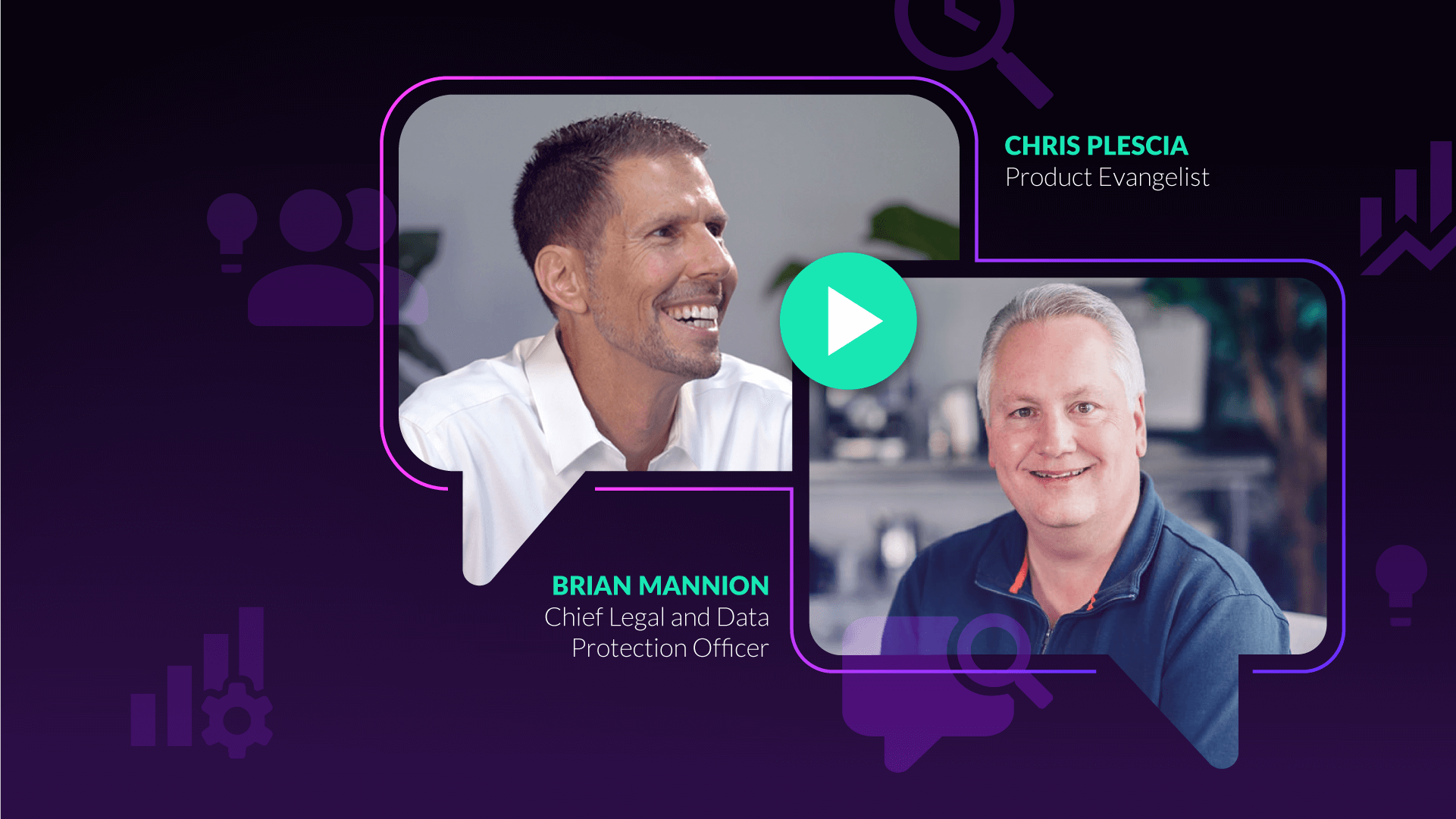
Gain Control of Collaboration Data
Discover how you can enforce compliance and acceptable use in collaboration tools—without driving shadow IT.
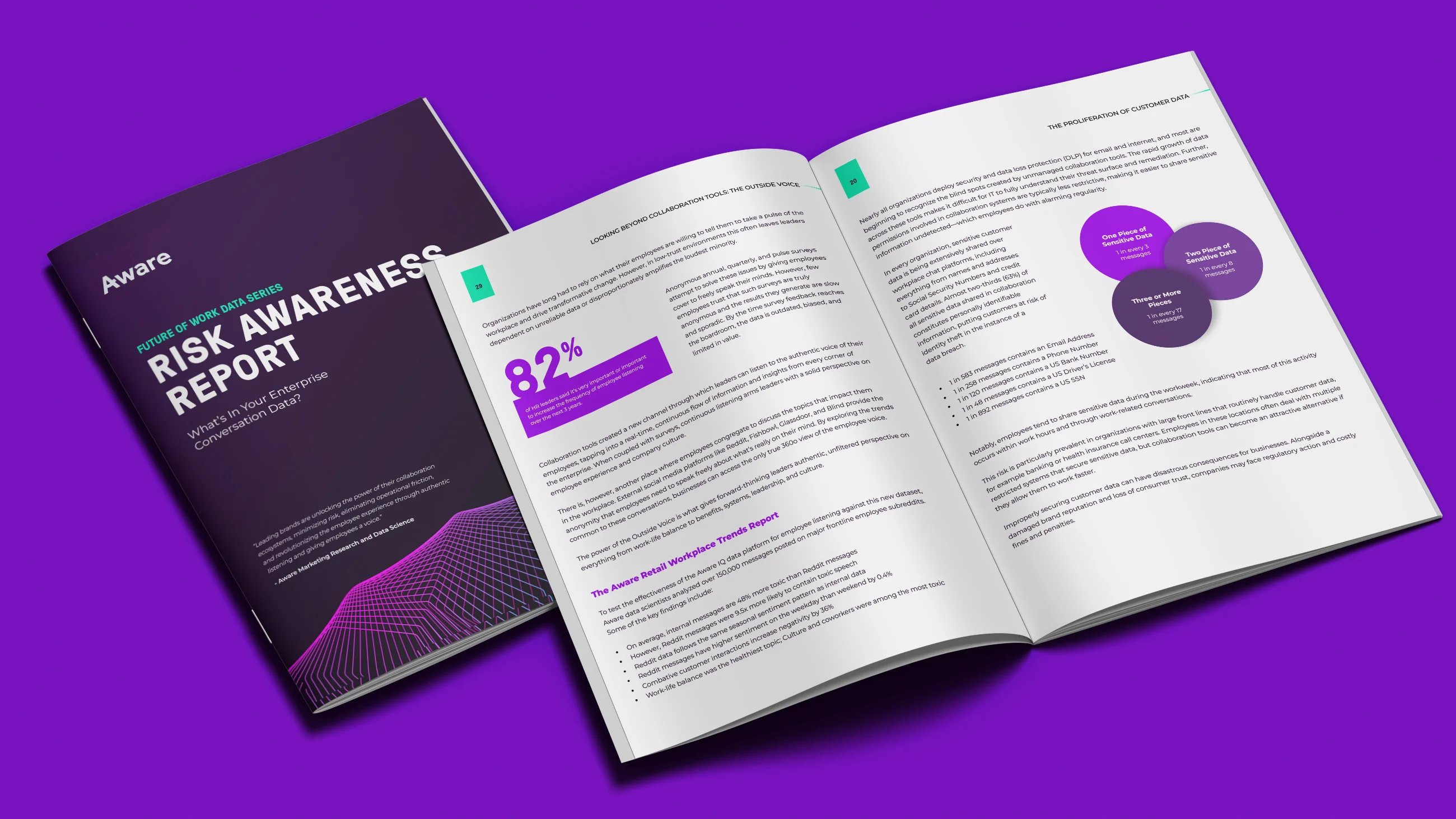
Risk Awareness Report
Aware data scientists analyzed 6.6 billion real collaboration messages to bring you the facts about noncompliance in this data set.
Questions? We're here to help
Everything you need to know about the Aware platform.
What are the risks associated with unmanaged collaboration messages?
Employees rely on company-provided collaboration tools like Slack, Teams and Zoom to help them do their jobs quickly and effectively. Because the tools are sanctioned by the workplace, it’s fair to assume they are safe repositories for all work-related conversations. However, information security and legal leaders know that is not the case. Collaboration tool datasets are stored indefinitely by default, and their complex architecture of public, private and group conversations make it almost impossible to see all the sensitive information they hold. Aware research shows that just 5000 employees will generate over 30 million collaboration messages each year, and approximately 1:166 of them will contain confidential or protected information or toxic and harassing statements. It only takes one of those messages to become public to cost the company millions in lost market cap, fines and penalties and lawsuits. Companies must proactively manage their collaboration tool data to mitigate the many risks it contains.
Are collaboration tools HIPAA, FINRA, and GDPR compliant?
-
HIPAA (Health Insurance Portability and Accountability Act) — protects the privacy and security of individuals' personal health information.
-
FINRA (Financial Industry Regulatory Authority) — regulates and oversees the securities industry in the United States.
-
GDPR (General Data Protection Regulation) — protects the personal data and privacy of EU citizens.
Collaboration tools are not compliant with major regulations like HIPAA, FINRA, or GDPR right out the box. However, they can be used in a compliant manner by implementing the right controls and coaching employees on appropriate use practices. Some ways to make collaboration tools compliant with regulations like GDPR, HIPAA, and FINRA include setting retention policies that meet regulatory need, coaching employees on what information they can and cannot share in collaboration, and implementing an automated compliance adherence platform like Aware that can detect noncompliance and establish retention rules within collaboration messages.
Why is it important to use a compliance monitoring tool built for collaboration? What’s unique about this dataset?
Collaboration tool datasets are unlike any other. They are non-linear, fragmented, filled with shortform messages, acronyms and slang. They also include non-standard features such as emojis, images, and gifs, which courts and regulators have already ruled can have defined meaning within these datasets. Modern companies are conducting business with a 👍 or 👎, and legacy data loss protection tools cannot parse these characters or often miss their nuances. Many traditional tools also batch ingest content, which fails to capture a complete record of revisions and deletions and can leave companies exposed.
Aware was purpose-built for collaboration datasets, and captures a complete record of all messages, including revisions and deletions, in real time. The Aware platform further infuses collaboration messages with AI/ML-informed metadata that brings context to the chaos.
How does Aware detect sensitive information in collaboration tools?
Aware ingests collaboration tool data in near real time and automatically runs messages through Artificial Intelligence and Machine Learning (AI/ML) infused workflows designed to detect sensitive and noncompliant data-sharing. Aware provides customizable automations for major compliance regulations such as HIPAA and FINRA, and organizations can create their own workflows for their unique confidential and proprietary data using keyword detection and Boolean logic.
What other steps should businesses take to mitigate risk and improve risk posture in collaboration?
Creating a fully compliant workspace within collaboration tools requires a considered and deliberate approach. Collaboration tools are not automatically or intuitively compliant with any major legislation but do enable the functionality to be used in a compliant manner. Sometimes this requires upgrading your tool subscription to a higher tier workspace or implementing a third-party compliance solution like Aware (or both!).
Even in fully compliant collaboration environments, other risks still exist. Employees may share restricted or sensitive information, engage in harassment or toxic speech, or even conduct unlawful activities such as insider trading or illegal gambling. Aware enables businesses to take charge of unauthorized activities within collaboration tools by automatically ingesting and analyzing messages to flag misuse and toxicity in real time.
Does Aware support automated compliance training within collaboration?
Yes. Aware ingests collaboration messages and analyzes them for noncompliance in real time. This enables real-time compliance training by immediately flagging the noncompliant message and automatically coaching the employee on the correct use of collaboration tools.
What is an information governance records retention strategy?
Information governance concerns how organizations manage their data. Records retention involves creating and implementing policies that treat information as a valuable business asset. Done correctly, a successful information governance records retention strategy keeps data secure and compliant while enabling access to extract the value it contains.
How can companies enforce retention strategies or perform records retention in collaboration?
Retention polices are an important element of any information governance strategy. Some information must be retained for a fixed period, especially in highly regulated industries. However, other data should be purged quickly to protect confidential business information. Finally, organizations must consider the storage costs of the data they collect. Establishing a data retention strategy helps businesses understand the scale and value of their data. Many collaboration tools enable administrators to set granular data retention controls. Aware also supports this functionality across its collaboration dataset.
Does Aware support granular data retention controls?
Aware supports granular data retention controls across collaboration tools from a single, centralized source of truth. Backed by Role-Based Access Controls (RBAC), workspace administrators can create custom rules to suit the most complex retention needs within collaboration datasets.
What other use cases does Aware support in addition to compliance monitoring and adherence?
The Aware AI data platform was purpose-built to understand the nuances of collaboration conversations. Using real-time analysis and industry-leading sentiment analysis, Aware supports a range of use cases within collaboration tools, including information governance and security, eDiscovery and legal investigations, insider risk detection, and employee experience management.





